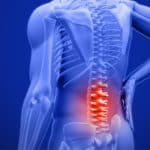Knee pain is one of the leading causes of chronic pain impacting daily function, mobility, and overall quality of life. 2nd only to back pain, knee pain is a top musculoskeletal complaint driving healthcare utilization costs and associated disability.
Resulting from a wide range of ailments from arthritis to traumatic injuries to poor mechanics, knee issues don’t just cause discomfort but also interfere with one’s ability to walk, squat, kneel, and sleep.
Physical Therapy for Knee Pain Relief
For many knee pain sufferers, physical therapy is a go-to choice for controlling pain, improving mobility, and getting back to living life to the fullest. Through the use of modalities, manual treatments, and therapeutic exercises, physical therapists work to restore optimal joint function and reduce dysfunction that leads to pain and inflammation in the knee and surrounding area. While physical therapy has long been considered a frontline treatment for knee pain, growing research is now examining the addition of complementary therapies like CBD to PT for enhanced outcomes.
What is CBD?
CBD (or cannabidiol) is an active compound found in the cannabis plant. Extracted from hemp, a cannabis variety, CBD is used to promote wellness, reduce pain and alleviate tension. Unlike its counterpart THC, CBD does not cause a “high” that many people associate with cannabis.
CBD interacts with the human body through the endocannabinoid system or ECS. This system is involved in several physiological processes including pain processing, inflammatory control, and immune function. Although further clinical trials are needed to confirm its effects on humans, CBD is thought to modulate neurotransmitters responsible for pain relief, reduce proinflammatory cytokines, and protect neurons against damage.
CBD comes in a variety of forms ranging from topical creams to tinctures to oils. Whether you are trying to combat inflammation from a systemic approach or control pain locally at the knee joint, your mode of CBD application should reflect your treatment goals.
Integrating CBD into Physical Therapy
If you’re wondering how CBD can be combined with physical therapy for knee pain relief, there are a number of potential applications. Contrary to the harsh medications that many physicians will prescribe for knee pain and associated conditions, CBD is far better tolerated and for many can yield similar symptomatic results. While not yet FDA-approved for the treatment or prevention of chronic or acute pain, the CBD industry as a whole is exploding based on growing success stories that boast pain relief, reduced tension, and improved quality of sleep with CBD use.
When to Use CBD in Conjunction With PT
In terms of CBD timing, there are no set guidelines for when CBD must be applied. Rather, consider your symptoms and treatment goals and incorporate them accordingly:
- Pre-treatment: To reduce pain levels and improve your tolerance for an active session, CBD can be applied before a physical therapy session. Putting your mind and body in an optimal state pre-treatment can allow for a more robust session and enhance motivation to push through your mobility or strengthening program.
- Post-treatment: If you’re looking for more of a recovery benefit, many users will apply CBD post-treatment to soothe achy muscles and promote relaxation. Following a more strenuous physical therapy session, calm the system with CBD to reduce any undue inflammatory response and decrease muscle tension.
Although further studies are needed to understand the full spectrum of CBD benefits on the human body, the outlook of the treatment is quite promising. Given potential drug interactions, always remember to consult your physician before initiating CBD treatment and remember one-size-fits-all does not apply. Like all other effective medical management, incorporating CBD into a more comprehensive treatment strategy for knee pain will always yield the best results.
In conclusion, knee pain can be debilitating, affecting your mood, mobility, and quality of life. Finding relief from knee pain is crucial, whether it’s due to an acute injury, joint wear and tear, or another condition. While physical therapy continues to be the number one solution for many knee pain sufferers, incorporating complementary therapies like CBD could potentially bring further benefits including enhanced tolerance for treatment, reduced inflammation, and expedited recovery timelines.







